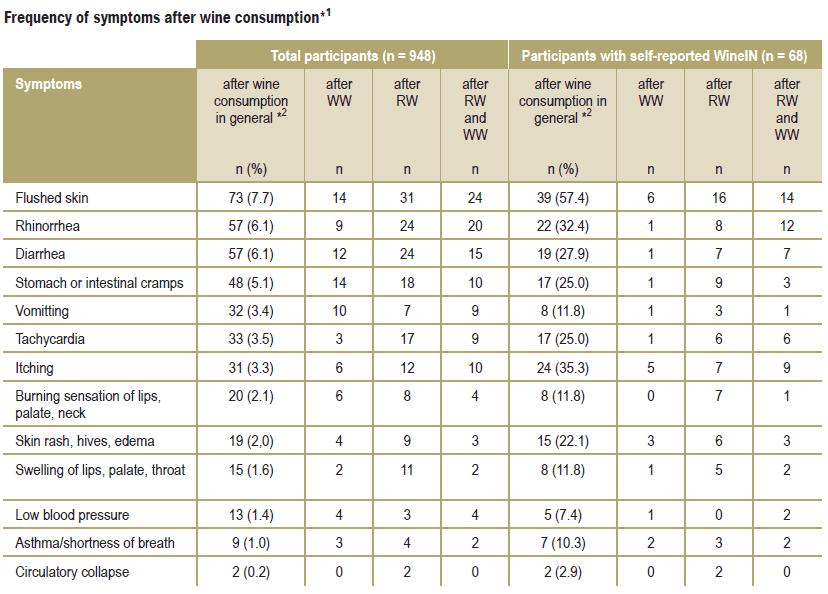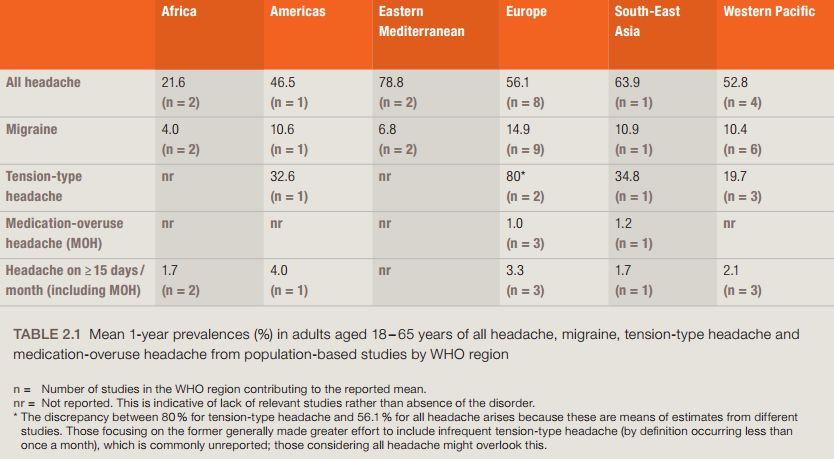You have inserted something wrong
It is not possible to leave it empty!
that occurs to various degrees in many foods.
Histamine intolerance results from a disequilibrium of accumulated histamine and
the capacity for histamine degradation.
Research suggests that histamines are a primary cause of red wine headaches, and more specifically, migraine headaches.
Although generally referred to as an allergic reaction to histamine, the headache is, in effect, a food intolerance.
Some states, that are more sensitive to the problem of histamines present in wines (expecially in red ones), have started recommending a maximum level of histamines in wine; these countries are (hisamines expressed in mg/l):
Why the intolerance happens?
Histamine intolerance results from a disequilibrium of accumulated histamine and the capacity for histamine degradation.
The main enzyme for metabolism of ingested histamine is diamine oxidase (DAO).
An impaired histamine degradation based on a reduced DAO activity, and the resulting excess of histamine may cause a big range of symptoms like an allergic reaction.
Ingestion of food with high histamines leg, alcohol, or drugs that release histamine or block DAO may provoke diarrhea, headache, congestion of the nose, asthmatoid wheezing, hypotension, arrhythmia, urticaria, pruritus, flushing, and other conditions.
The 80% of people with histamine intolerance are middle-aged
Histamine was first discovered by Dale and Laidlaw in 1910,
and it was identified as a mediator of anaphylactic
reactions in 1932.
Histamine is a potent mediator of numerous biologic reactions.
It causes smooth muscle cell contraction, vasodilatation, increased vascular permeability and mucus secretion, tachycardia, alterations of blood pressure, and arrhythmias;
other than these, it stimulates gastric acid secretion and nociceptive nerve fibers.
In addition, histamine has been known to play various roles in neurotransmission, immunomodulation, hematopoiesis, wound healing, day-night rhythm, and the regulation of histamine- and polyamine-induced cell proliferation and angiogenesis in tumor models and intestinal ischemia.
Histamine and headache
Headache can be induced dose-dependently by histamine in healthy persons as well as in patients with migraine.
Histamine-induced headache is a vascular headache caused mainly by nitrate monoxide
Other than histamine:
wines, and expecially red-wines, contain also other biogene amines than histamines, such as thyramine, sulfites, tannins.
Tyramine may also have a major role triggering red wine headache; it is present in aged and fermented foods;
Tyramine is suspected of inducing migraine headaches in about 40% of migraine sufferers, according to F.G.Freitag of Diamond Headache Clinic in Chicago.
Recent studies says that the amount of tyramine varies depending also on the type of grape used to make the wine.

(results of a test about wine consumption; WW = white wine, RW = red wine)
Data sources and external links:
A headache or cephalalgia is pain anywhere in the region of the head or neck and can be a symptom of a number of different conditions.
There are more than 200 types of headaches; some of them are harmless and some are life-threatening.
since headaches can result from a wide range of causes, are broadly classified as "primary" or "secondary.
While secondary headaches are due to problems elsewhere in the head or in the neck (ex. meningitis, hemorrhage, aneurysm), primary headaches, that are the 90% of the total, are migraines and tension-type headaches.
Migraines
tipically present with pulsing head pain, nausea,
sensitivity to light (photophobia) and sensitivity to
sound (phonophobia).
Otherwise tension-type headaches present with non-pulsing pressure on both sides of the head.
The brain itself is not sensitive to pain, since it lacks nociceptors (pain receptors).
In any case, several areas of the head and neck do have nociceptors, and so can sense pain.
These include the extracranial arteries, middle meningeal artery, large veins, venous sinuses, cranial and spinal nerves, head and neck muscles, the meninges, falx cerebri, parts of the brainstem, eyes, ears, teeth and lining of the mouth.
Headache disorders are ubiquitous, prevalent and disabling and yet they are under-recognized and under-treated worldwide;
From "Atlas of Headache disorders and resources in the world 2011":
Approximately half to three quarters of adults aged 18–65 years have had headache in the last year in studies from all regions except Africa, where the estimated 1-year prevalence is lower at 22%.
Migraine is reported, in these studies, in more than 10% of adults in this age range, except in Africa and Eastern Mediterranean.
Headache on 15 or more days every month affects 1.7–4% of the world’s adult population, according to these studies.

Data sources and external links: